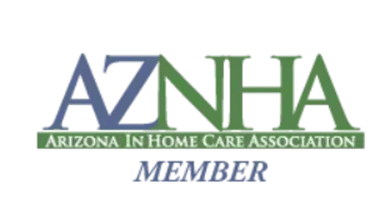Reprinted from the Senior Spirit Newsletter, a CSA Publication
It’s that time of year again, a time of teeth-gnashing and pencil-crunching, as we haul out our receipts and statements from last year and prepare to do our federal income tax returns. As tax deadline approaches, you may not be aware of all the deductions available to seniors or that free tax help is available in your neighborhood.
Medical and Dental Expenses
When you were younger, you might not have had enough medical expenses to make it worthwhile to itemize your deductions on Schedule A and instead took the standard deduction. However, increased age not only brings more wisdom but more medical issues and expenses. One estimate is that as much as 30 percent of a senior’s income is allocated to health care costs.
Not all of those costs are covered by your insurance plan or Medicare. In fact, the list of deductible medical and dental issues is exhaustive. For instance, you can deduct the cost of acupuncture, stop-smoking clinics and contact lenses (see sidebar). Other deductibles are health insurance premiums (including Medicare premiums), long-term care insurance premiums, prescription drugs, nursing home care and most other out-of-pocket heath care expenses.
You must include only the medical and dental expenses you paid this year, regardless of when the services were provided. That is, if you bought new glasses last year, but didn’t get the bill until this year, you won’t be able to deduct it until your 2013 taxes come around. And these are only for expenses you paid yourself; if the insurance company paid the tab, you can’t take the deduction.
Medical and dental expenses must exceed 7.5 percent of your adjusted gross income (AGI) in order to qualify for a deduction; this increases to 10 percent for 2013, making it more difficult to access next year. Similarly, itemized deductions will be subject to phase-outs beginning in 2013. For example, if your AGI was $100,000 in 2012, only your medical expenses above $7,500 (7.5% x $100,000 = $7,500) would be deductible. If you had $10,000 in medical expenses in 2012, you could deduct only $2,500 ($10,000 – $7,500).
Standard Deductions for Over 65
Even if you don’t itemize your deductions, if you are 65 or older by Dec. 31 of the tax year, you can take a standard deduction for your age. Single people over 65 can claim $1,450, while married people can take an extra $1,150 for 2012. You can also claim the higher deduction if only your spouse is older than 65 and you file a joint return. You qualify for a higher standard deduction if you are totally or partially blind—that is, you do not have corrected vision of at least 20/20 or you have an extreme limitation in your field of vision. These standard deductions will increase in 2013.
Retirement Plans
Another gift from the government is higher contribution limits for retirement plans (again, increasing in 2013). Once you turn 50, you can contribute more to an IRA, Roth IRA or 401(k). This means socking away more money in an IRA without having to pay taxes on it. (With the Roth IRA, you pay taxes upfront instead of when you withdraw, meaning that any interest earned is tax-free). For example, a married couple over 50 can contribute as much as $12,000 to an IRA and deduct the amount from their income tax.
Further, interest, dividends and investment capital gains are taxed at a lower rate than other income, typically 15 percent, and are not subject to Social Security or Medicare taxes. In 2013, income from such gains will be taxed at higher rates for high-income seniors, who will also see a higher effective Medicare tax rate.
You may also be able to include investment-related expenses (such as investment advice, fees for a safe deposit box and subscriptions to investment newsletters) that exceed 2 percent of your AGI in your other itemized deductions.
Home Sale
You may be thinking of downsizing into something more manageable or maybe escaping to a warmer climate. If you sell your home, you may not have to pay taxes on any profit made from your home’s sale if you lived in your home for at least two of the five years prior to selling it. Tax laws allow a single filer to claim, with no taxes, up to $250,000 in profit on a home sale, and up to $500,000 for a married couple filing together.
Paying Taxes on Social Security
Don’t forget that if you made substantial income while collecting Social Security, you may have to pay taxes on that income. This usually happens only if you have other substantial income (such as wages, self-employment, interest, dividends and other taxable income that must be reported on your tax return) in addition to your benefits. Internal Revenue Service (IRS) rules state that no one pays federal income tax on more than 85 percent of his or her Social Security benefits.
The Social Security website advises that if you file either an individual tax return or joint return, and your combined income (that is, your adjusted gross income plus nontaxable interest plus one-half of your Social Security benefits) is between $25,000 and $34,000, you may have to pay income tax on up to 50 percent of your benefits. If your combined income is more than $34,000, up to 85 percent of your benefits may be taxable.
To let you know your Social Security earnings, each January the government will send out a Social Security benefit statement (Form SSA-1099) showing the amount of benefits you received in the previous year. If you do have to pay taxes on your Social Security benefits, you can make quarterly estimated tax payments to the IRS or choose to have federal taxes withheld from your benefits.
Help Is Around the Corner
Help Is Around the Corner
Finally, if you find yourself getting grouchy about all the details and complex instructions for your taxes, you can find free help through the AARP Foundation. Tax-Aide is a free tax preparation service for people 60 and older with low to middle incomes.
www.blessingsforseniors.com
Blessings for Seniors makes it possible for older adults to enjoy the comforts of their own home for as long as possible. We offer a customized care plan that includes services such as; Hourly Senior Home Care, 24-Hour Home Care, Dementia Care, Personal Care and Companion Care. Also ask us about our Veterans’ Home Care program.
- How Companion Care at Home Can Help Your Loved One - April 4, 2024
- The Intersection of Food Insecurity and Mental Health in Seniors - March 25, 2024
- What Seniors And Their Families Should Know About Inflammation - March 8, 2024


